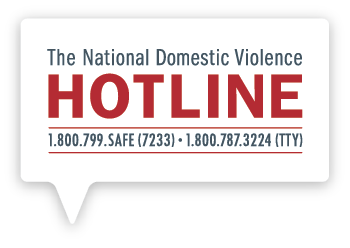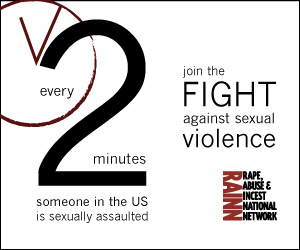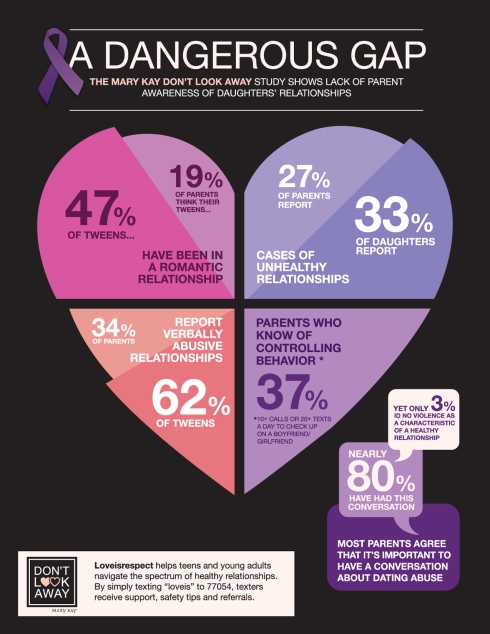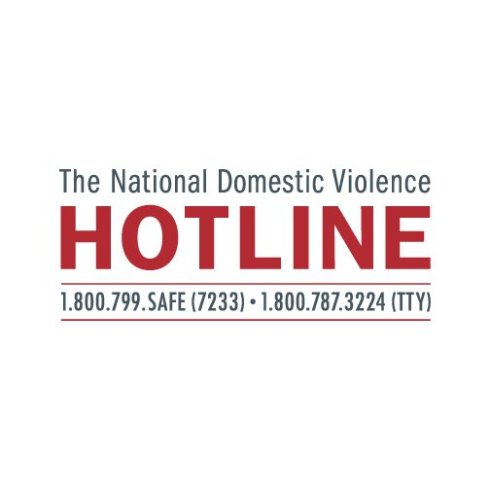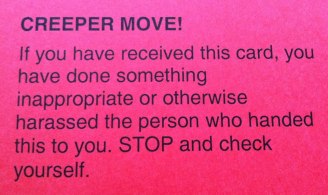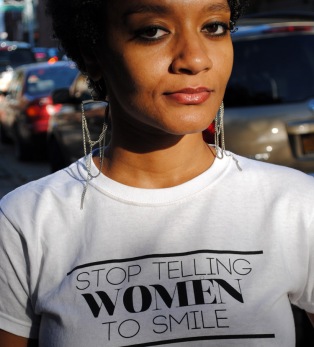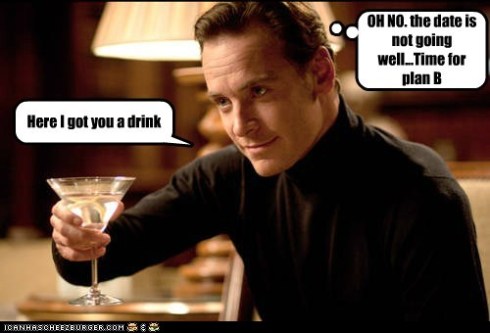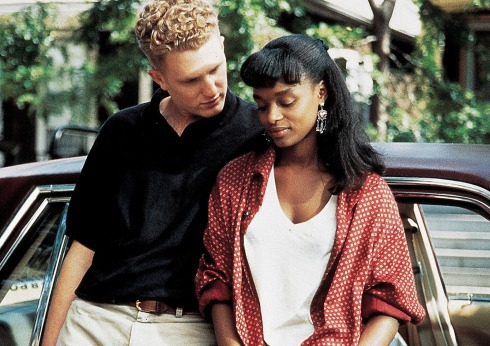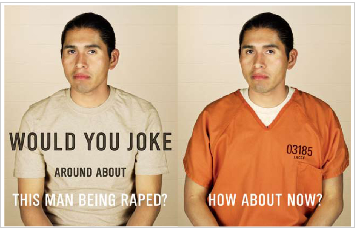In light of the misogyny fueled murders in Isla Vista, California on May 23rd I wanted to share a paper I wrote for graduate school back in 2011. It’s all still sadly true. Rest In Peace kids.

Students mourn the loss of life at UCSB
Analyzing Misogyny as a Challenge to Peace
Every year in the United States thousands of people are murdered by someone with a gun. In 2005 alone the number of shooting-related homicides exceeded 10,000.[1] In 2003 a full 50 percent of women killed in homicides, where the weapon could be identified, were killed by guns, in single female victim/single male attacker scenarios.[2] In 92 percent of these cases the women murdered knew their attackers. Periodically in the United States a number of women are killed all at one time, by one attacker with multiple guns (or one semi-automatic gun). While faulty gun-control laws and a broken judicial system are certainly challenges to peace, this paper will focus on misogyny as a major obstruction to peace in the USA and the ways in which peace education can combat the hatred of women.
On March 3, 1998 Mitchell Johnson, 13, and Andrew Golden, 11, stalked their classmates outside the Westside Middle School in Jonesboro, Arkansas and shot 15 women and girls, killing one teacher and four students.[3] On September 27, 2006 Duane Roger Morrison, 53, entered Platte Canyon High School in Bailey, Colorado and sexually assaulted the six female students he had taken hostage. After releasing four of the hostages Morrison killed one girl and then himself as police rushed in.[4] Five days later, on October 2, 2006 Charles Carl Roberts IV, 32, entered a schoolhouse in the Amish community of Nickel Mines, Pennsylvania, sent the boys and adults out of the room, lined up the remaining 10 girls, aged six-to-13, along the wall and shot them, killing five, before killing himself.[5] On August 4, 2009 George Sodini, 48, entered the LA Fitness gym in Collier Township, Pennsylvania and shot 12 women, killing three, before turning the gun on himself.[6] This list of heinous hate crimes committed by men and boys from adolescence to middle-age against women and girls does not include the numerous other mass shootings that have taken place in which the perpetrators were men and the victims men and women. Young men in America are taking their anger out by shooting women but there is no public outcry against hatred of women because “we have become so accustomed to living in a society saturated with misogyny that violence against females is more or less to be expected.”[7]
With so many incidences of deadly gun violence perpetrated by men in the United States, many people wring their hands wondering what is to be done to prevent such large-scale tragedies from occurring again. The problems faced are complex, and while it may seem easier to label each of the perpetrators of these gruesome crimes as mad men, “the vast majority of homicidal violence is perpetrated by men who have severe disorders of personality or character, but who are not technically ‘insane.’”[8] The non-fatal violence committed against women on an everyday basis–beatings, rape, assault–are individual examples of the overwhelming misogyny drowning American society. Commentators in mainstream media incorrectly identify mass shootings not “as different by degree, but by kind, because unlike most men who commit this kind of hate crime”[9] [domestic violence] the shooters overwhelmingly did not know their victims. In reality the mass shootings of women by men are merely magnified instances of violence against women and “few if any voices in mainstream media have discussed the connection between guns, violence, and American ideals of manhood.”[10] In 2005 alone 1,181 women–an average of more than 98 women per month–were killed by their partners.[11] As a society, America must do some serious moral revamping if it wants to abolish its culture of misogynistic mass shootings and violence against women. To end the structural violence of misogyny, many institutions will have to undergo massive shifts in thinking, including the education system, the legislative system and the media, among others. This essay will focus on the institution of education.
Misogyny functions within the sexist system of patriarchy in the United States. To clarify, sexism is “systematic discrimination against women. Misogyny is the hatred of women that allows men… to feel entitled to beat women, discriminate against them, and control them. The patriarchy is… the overall system of male dominance that’s aimed at controlling women… and funnel[ing] women into social positions that are in servitude towards men. The patriarchy also has set roles for men, and a pecking order for them.”[12] These explanations form the reasoning behind many definitions of feminism and are the motivation for the extensive number of gender studies programs cropping up in high schools, universities and graduate schools around the world. While feminism–the belief that all people, regardless of gender/sex/sexual identity/expression/orientation, should be equally valued and have equality of opportunity–is not taught in most schools across the country, strict gender roles that reinforce male superiority over females are. No ideology of hatred or inferiority should be taught in school but they are ingrained elements of the education students receive in the US.
All of the men and boys who have committed mass shootings in the United States were educated by this same institute of patriarchy. “It is impossible to separate those men’s feelings and their chosen response to them from their societal context, which includes how we define manhood, how we socialize boys, and yes, how young men learn – how we as a culture teach them – that blowing people away with guns represents the ultimate assertion of manly resolve, competence, and reclaimed honor.”[13] In the United States education system, in addition to performing poorly in literacy tests, it “is boys who are more likely to quit school early, to be in special education, to have behaviour problems and be suspended or expelled. Boys are far more likely to skip their homework, arrive at school without books or pencils and cause a disturbance that gets them kicked out of class. Boys are more likely to commit suicide or to be arrested.”[14] And boys and men are considerably more likely than girls or women to be the perpetrators of violent crimes like assault, rape, and murder. Given these bleak facts, it is obvious that America’s socialized gender roles are harmful to boys and girls alike, and it is imperative that the education of youth in America be revamped.
“There are many risk factors for violent behavior – family patterns of behavior; violent social environments; negative cultural models or peers; alcohol and/or drug abuse; and availability of weapons. Addressing some of these factors directly in school can inoculate children against risky behaviors.”[15] Peace education is the key not only to ensuring that boys and girls learn the materials taught in school, but also to stamping out misogyny and violence for future generations. In traditional teaching methods, such as the “banking method,” teachers project “an absolute ignorance onto others, a characteristic of the ideology of oppression….” Within this ideology “the teacher is the Subject of the learning process, while the pupils are mere objects.”[16] This “us versus them” mentality generally proves to be harmful. Whenever someone is made to be the “Other” s/he suffers for it. When children are the “Other” they are subjected to the demands and ideas of the teacher – whatever they may be. This method of teaching “serves the interests of the oppressors, who care neither to have the world revealed nor to see it transformed.”[17] Because most educators are not aware of their own misogyny it can be very difficult to explain to them how their everyday behavior is supporting systematic sexism and hatred of women.
Due to the fact that most teachers in the United States are from the US, they have been raised in a patriarchal society with the same subvert misogyny that is a root cause of violence against women as the mass murderers. Because their students are “receptacles” they too get filled with not only their teachers’ ideas of proper gender roles (i.e. men are doctors and women are nurses) but also the value judgments placed on each gender (i.e. men are more logical and women are more emotional and their respective positive and negative connotations). “Millions of men in our society – and across the world – use violence against women as a way to control them or punish them for not fulfilling some role the man wants or feels entitled to from her – or from women in general.” When boys learn that society considers them superior to girls, girls must conversely be taught that as far as society is concerned they are inferior to boys. It is imperative then that teachers do everything in their power to teach that every individual, male or female, has equal worth and equal right to bodily integrity, personal opinions, and access to information and services. Social learning theory poses that children learn from observing the behaviors of others and will adopt the behavior if there is significant motive or reward for them to do so. When boys act tough and receive praise from classmates, older students or siblings and parents, this reward is internalized. Similarly when girls are praised for being “so polite and quiet” by teachers and parents they learn that women are supposed to be nice, pleasing, and unobtrusive. To combat the negative affects of strict gender roles teachers should model respect for all people and encourage constructive problem solving. Students should be rewarded regularly by teachers and parents alike for good behavior and recognizing equality in all people. Only when children are rewarded equally for the same types of good behavior will gender differences fade away.
In “many formal schooling systems, the integration of nonviolence principles in policies, programs, curricula and teaching-learning environments has expanded in recent decades. These programs essentially promote values and practices of conflict resolution and violence-prevention to overcome a culture of violence in schools and communities (e.g. bullying; gangs; corporal punishment; assault on teachers).”[18] This culture of violence can no longer be tolerated by teachers, administrators, students, families and society. In a way that eerily mirrors the adult world, boys perpetrate most of the violence in schools, thus, boys must be educated to deal with their emotions in a healthy, non-violent manner, and be rewarded for articulating their needs and concerns, and solving conflicts through respectful dialogue. Scholastically every child must be taught that all people are of equal intrinsic value. All children must be taught that they have the right to express their feelings and how to deal with conflict in a healthy, non-violent manner. Birgit “Brock-Unte pointed out the devastation that militarism, war and male violence wreaks on females and argued that feminism is the starting point for effective disarmament. She pointed out that societies not at war were not necessarily peaceful societies because they still had considerable domestic violence.” Thus, it is no surprise that feminists have urged “schools to change their curriculum away from a competitive to a caring focus…”[19]to work towards gender equality.
“Greater gender equality will reduce the pressures on men to conform to damaging and rigid forms of masculinity. This is likely to, for example, reduce men’s ‘violences’ (i.e. violence in all its forms), and help to improve community safety and develop peaceful conflict resolution. It will also contribute to raising the next generation of boys (and girls) in a framework of gender equality.”[20] The structural violence of gender inequality is harmful to both men and women but some sectors of the United States are in a process of peacemaking. “Critical education and empowerment of ordinary citizens to be active in the peace-building process has been vital in the successful steps towards building nonviolent societies.”[21]
One important step all educators can take to end misogyny is to mind their and their students’ language. Language that alienates people also dehumanizes them and makes inhumane actions towards them possible and sometimes acceptable. Hopefully at some point the bastardizations in the English language that allow blanket statements to be made about whole populations will disappear (i.e. men are rational). People should hold one another in high enough regard to appreciate everyone’s differences and use terminology that is in no way derogatory, disrespectful or suppresses their individuality. Likewise gender should be brought up when it is appropriate and left out when it is not. In elections across the nation in 2010 female right-wing politicians verbally castrated their male opponents with gendered epithets such as “man up.” “In a country that sees masculinity – especially violent masculinity – as the ideal, it’s no wonder that this type of language resonates. But it’s a sad state of affairs when women in politics have to resort to using the same gendered stereotypes that kept all women out of public service for so long.” In a misogynist patriarchy like the United States the worst insult for anyone is to be feminine or feminized. This leaves women, who are “supposed to” be feminine, between a rock and a dangerous place.
“In discussions about violence, it is more accurate to use gendered words like ‘men’ and ‘boys’ whenever possible, as they comprise the vast majority of perpetrators of violent crime. It is not helpful to pretend that violence is a gender-neutral phenomenon, and it does not advance violence prevention efforts.”[22] By challenging the way men and women talk about themselves, their feelings, and each other, change in their mindsets is inevitable. The language people use is a key insight into their worldviews; thus, if what people are saying is modified what they are thinking will eventually also be modified. Educators have an obligation to stop the spread of such lies as “boys don’t cry” and insults like “you throw like a girl.” While very common, these simple phrases can be very harmful, perpetuating structural violence and gender inequality, and when backed by advertisements that continually show aggressive men and passive women, the combination can be deadly. And what is not being said is just as important as what is being said. “The failure even to discuss the relationship between cultural ideas about manhood and the pandemic of gun violence in our society runs across the board politically.”[23] The media, politicians, educators, and average citizens all have a responsibility to speak out against injustice, no matter how unpopular the truth might be.
In addition to overhauling the education system in the US legislation must be passed to enforce sensible gun ownership laws as well as to dole out appropriate punishment and counseling for criminals, such as stalkers, who often become more violent as time goes on. All forms of media–from TV to movies to radio and music to advertising to newspapers–must also take a stand against misogyny. Men’s sense of entitlement to and ownership of women’s bodies is fueled by the media’s sexist advertising. Jean Kilbourne states in the third installment of her series of landmark films scrutinizing the use of women in advertising, Killing Us Softly 3, “Turning a human being into a thing is almost always the first step in justifying violence against that person.”[24] The media must be challenged to find another marketing gimmick–women must not be objectified and seen as commodities. The inequalities present in modern America have been stewing for hundreds of years, if not longer, therefore it will take a considerable amount of time for the bad habits of America and Americans to be broken. The task is not impossible though: overcoming misogyny is happening, one learning experience at a time. To un-teach sexism and hatred of women all of American society will have to undertake the chore of minding its tongue, reworking the sexist ideas imbedded within our lexicon (i.e. “rule of thumb”), and acting with compassion towards all people. The education system in the United States needs to undergo a complete overhaul of values, principles and methods if it is to overcome sexism. But revamping education alone will not eliminate misogyny or prevent another hyper-masculine display of violence through the mass slaying of women.
[1]”Expanded Homicide Data Table 7.” Sep 2006. The Federal Bureau of Investigation. 9 Sep 2009 <http://www.fbi.gov/ucr/05cius/offenses/expanded_information/data/shrtable_07.html>.
[2].”Females Murdered by Males in Single Victim/Single Offender Incidents.” When Men Murder Women: An Analysis of 2003 Homicide Data. Sep 2005. The Violence Policy Center. 9 Sep 2009 <http://www.vpc.org/studies/wmmw2005.pdf>.
[3].”Shooting at Westside Middle School.” SchoolShooting.org. 25 June 2009. Washington Ceasefire. 9 Sep 2009 <http://schoolshooting.org/attacks/westside-middle-school-jonesboro-ar>
[4]Associated Press, “Details from Colo. school shooting emerge.”MSNBC 1504103728 Sep 2006 1-2. Web.9 Sep 2009. <http://www.msnbc.msn.com/id/15041037/>
[5]”Fifth girl dies after Amish school shooting.” CNN.com. 3 Oct 2006. CNN. 9 Sep 2009 <http://www.cnn.com/2006/US/10/02/amish.shooting/>
[6]”Police: Gym shooter ‘had a lot of hatred’ for women, society.” CNN.com. 5 Aug 2009. CNN. 9 Sep 2009 <http://www.cnn.com/2009/CRIME/08/05/pennsylvania.gym.shooting/>.
[7] Herbert, Bob. “Why Aren’t We Shocked?” NYtimes.com. 16 Oct 2006. The New York Times. 26 Jan 2011 <http://select.nytimes.com/2006/10/16/opinion/16herbert.html?_r=1&n=Top%2fOpinion%2fEditorials%20and%20Op%2dEd%2fOp%2dEd%2fColumnists%2fBob%20Herbert&oref=slogin>
[8] Katz, Jackson. “Teachable Moment in Tucson: Guns, Mental Illness and Masculinity.” Huffintonpost.com. 17 Jan 2011. Huffington Post. 26 Jan 2011. <http://www.huffingtonpost.com/jackson-katz/teachable-moment-in-tucso_b_809963.html>
[9] Marcotte, Amanda. “These crimes don’t happen in a vacuum.” Pandagon. 5 Aug 2009. 26 Jan 2011. <http://pandagon.net/index.php/site/comments/these_crimes_dont_happen_in_a_vacuum/>
[10] Katz, Jackson (ibid).
[11]”Bureau of Justice Statistics Homicide Trends in the United States: Trends in Intimate Homicide by Gender table.” Bureau of Justice Statistics. 11 July 2007. US Department of Justice. 12 Sep 2009 <http://www.ojp.usdoj.gov/bjs//homicide/tables/intimatestab.htm>.
[12]Marcotte, Amanda. “Misogyny v. sexism v. the patriarchy .” Pandagon. 9 Apr 2008. 10 Sep 2009 <http://pandagon.blogsome.com/2008/04/09/7023/>
[13] Katz, Jackson (ibid).
[14]Spears, Tom. “Boys’ school problems unique, severe, largely untreated.” The Edmonton Journal. 9 Sep 2009 1. 10 Sep 2009. <http://www.edmontonjournal.com/health/Boys+school+problems+unique+severe+largely+untreated/1974157/story.html>.
[15]Salomon, Gavriel and Baruch Nevo, eds. Peace Education: The Concepts, Practices and Principles Around the World. Mahwah, New Jersey: Lawrence Erlbaum Associates, 2002. Print.
[16]Freire, Paulo. Pedagogy of the Oppressed. New York: Continuum, 2000. Print.
[17]Ibid.
[18]Toh, S.H.. Pathways to Building a Culture of Peace. 1st. Queensland, Austrlia: Multi-Faith Centre, Griffith University, 20007. Print.
[19]Salomon, Gavriel (ibid).
[20]”Man Made: Men, masculinities and equality in public policy.” Coalition on Men & Boys. 1st ed. 2009. Print.
[21]Toh, S.H. (ibid).
[22] Katz, Jackson (ibid).
[23] Ibid.
[24]Killing Us Softly 3. Dir. Sut Jhally. Perf. Jean Kilbourne. DVD. Media Education Foundation, 2000. Film.


